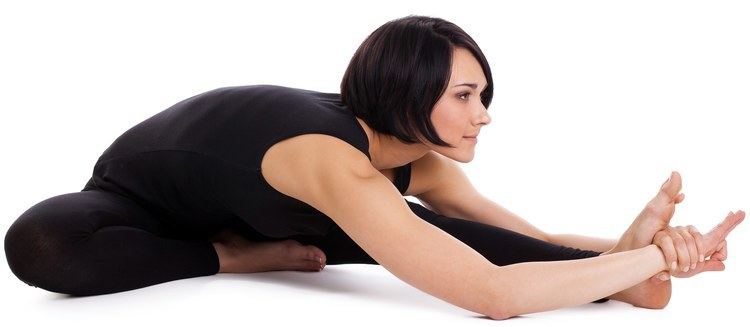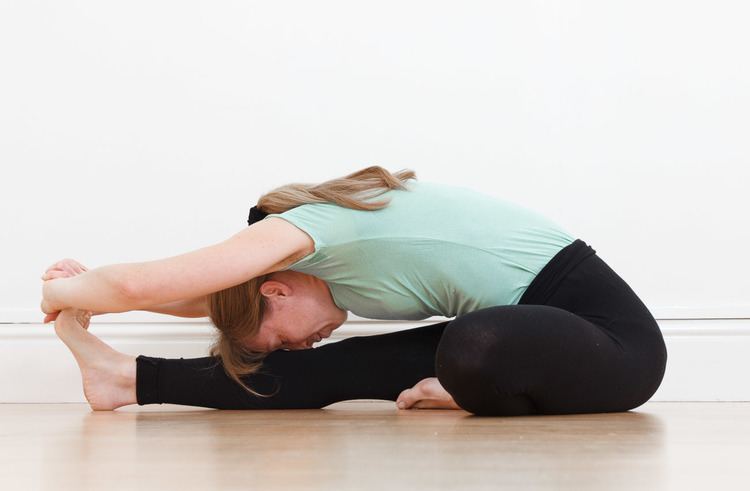Strengthens Human back | Pose type Forward bend, Seated | |
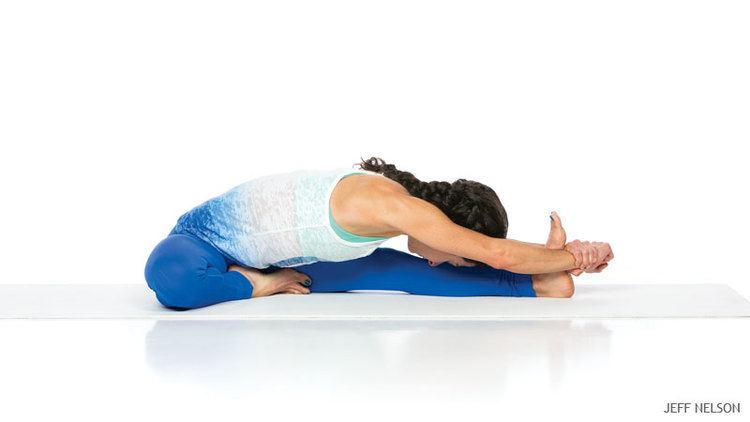 | ||
Note Consult a doctor before beginning an exercise regime Stretches Shoulder, Vertebral column, Hamstring, Groin Preparatory poses Uttanasana, Baddha Koṇāsana, Adho mukha śvānāsana, Vriksasana, Bālāsana, Supta Padangusthasana Also known as Head-to-knee pose, Janu Sirsasana Similar Sirsasana, Paschimottanasana, Uttanasana, Baddha Koṇāsana, Half Lord of the Fishes Pose ‑ Ar | ||
Janu Sirsasana (JAH-noo shur-SHAH-sah-nah; Sanskrit: जानु शीर्षासन; IAST: jānu śīrṣāsana), Head-to-Knee Pose, Head-to-Knee Forward Bend, Head of the Knee Pose, or Head-on-Knee Pose is an asana. It is part of the Ashtanga Yoga Primary Series and is commonly practiced as a seated asana in many styles of yoga.
Contents
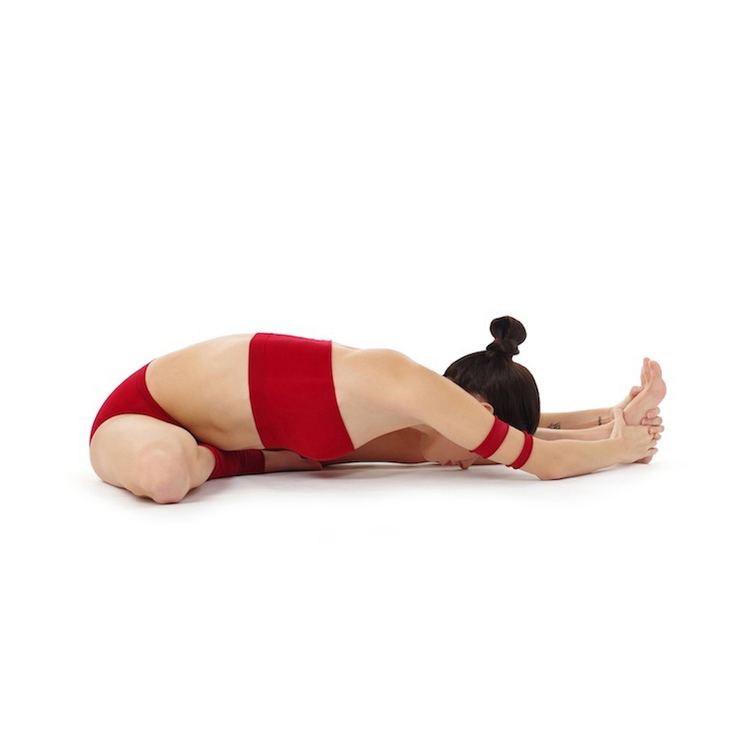
Etymology
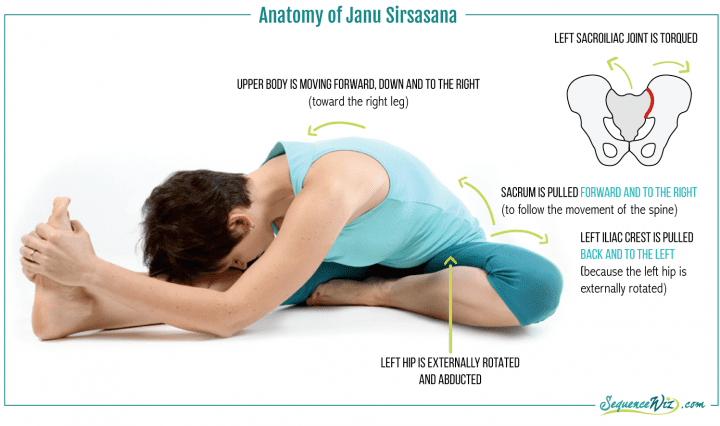
The name comes from the Sanskrit words janu (जानु, jānu) meaning "knee", shirsha (शीर्ष, Śīrṣa) meaning "head", and asana (आसन) meaning "posture" or "seat". Although it bears a similar name, Janu Sirsanana bears little resemblance to Sirsasana (Headstand).
Description
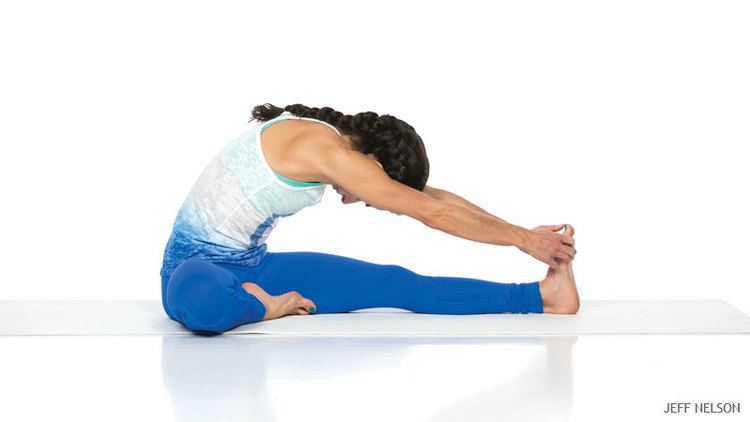
In a seated position, one leg is extended with toes pointing upward, and the other leg is bent with knee pointing away from the straight leg and the sole of the foot in by the groin. The torso turns and folds over the extended leg.
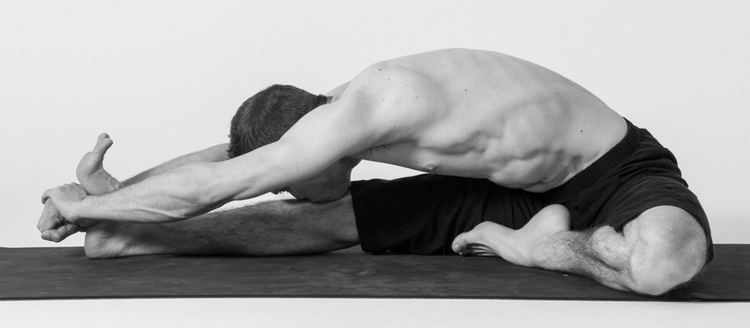
Janu Sirsasana is a spinal twist, as well as a forward fold. The potential is to free up constriction in different parts of the back and to loosen the hamstrings.
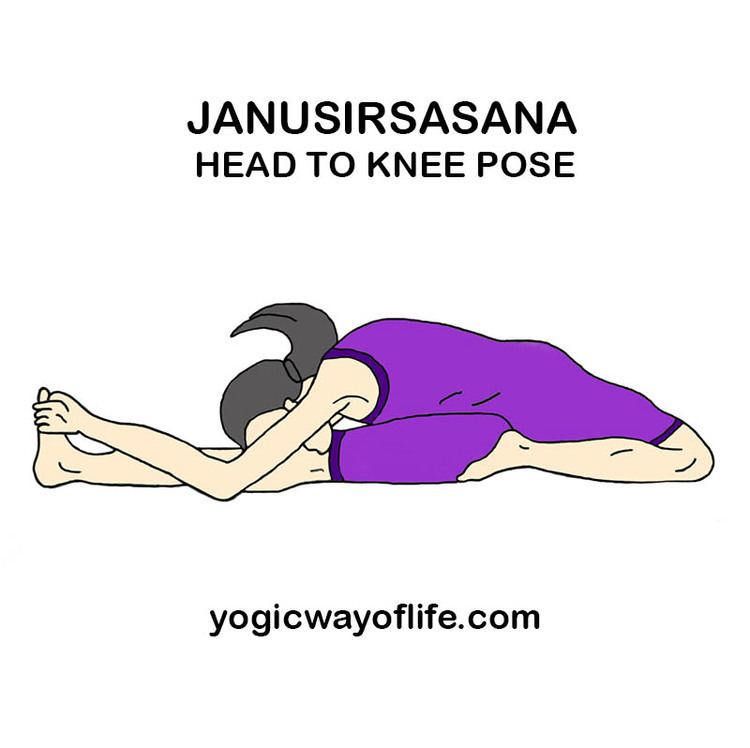
Janu Sirsasana differs from Paschimottanasana in its asymmetry in the legs and hips, and in the twisting action this asana imparts to the spine.
Variations
There are many variations to the practice of Janu Sirsasana. These include:
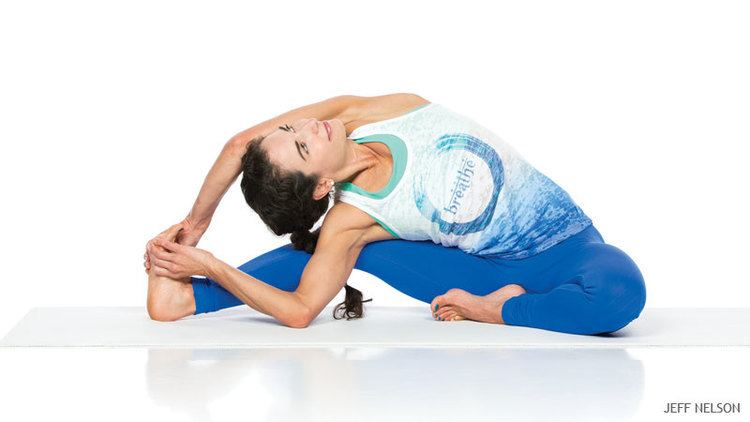
Benefits
